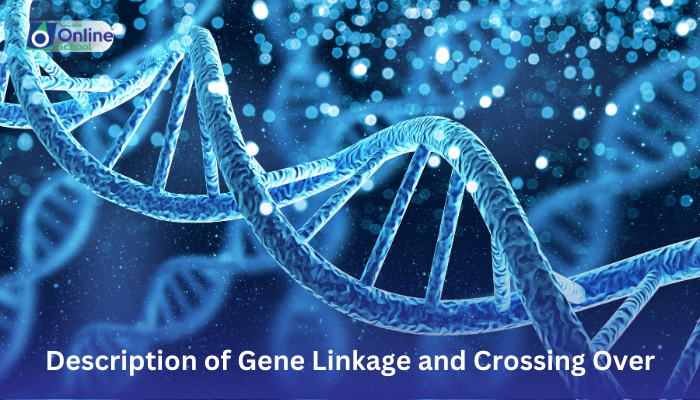
Learning Outcomes:
i. Define and explain the concept of gene linkage.
ii. Understand how genes on the same chromosome tend to be inherited together.
iii. Describe the phenomenon of crossing over during meiosis.
iv. Appreciate how crossing over contributes to genetic diversity in offspring.
Introduction:
Imagine a bustling train station where genes, like passengers, board chromosomes, their designated trains. In the world of genetics, genes located close together on the same chromosome often travel together, like families on a long journey. This tendency of linked genes to be inherited together is called gene linkage. But wait, the journey isn't always predictable! Sometimes, during a special process called crossing over, genes on the same train can switch partners, leading to unexpected combinations in the offspring. Get ready to embark on a fascinating exploration of gene linkage and crossing over, where the rules of inheritance get a little twist!
i. The Chain Reaction: Understanding Gene Linkage
Think of genes as beads strung together on a chromosome necklace. Linked genes, like close friends, are positioned very near each other on this necklace. During the formation of reproductive cells (sperm and egg), chromosomes pair up and undergo a dance called meiosis. This dance separates the chromosomes, ensuring each gamete receives one copy from each parent. However, because linked genes are close neighbors, they often end up on the same chromosome during this separation, leading to their inheritance together. This is why, for example, children with parents who have both blue eyes are more likely to inherit blue eyes themselves, as the genes for blue eye color tend to be linked.
ii. The Grand Swap: Unveiling Crossing Over
But here's where the story takes a turn! During meiosis, something magical can happen. Imagine two train tracks running parallel, representing the paired chromosomes. During the dance, a section of one chromosome can break and exchange material with the other chromosome. This is crossing over, a process where genes literally switch partners, creating new combinations on the chromosomes. This means that even if linked genes are initially inherited together, crossing over can shuffle them up, leading to offspring with different combinations of traits than their parents. Crossing over, like a talented magician, adds a layer of unpredictability to the inheritance of linked genes, creating a wider variety of phenotypes in the next generation.
iii. Beyond the Basics: A World of Diversity
Gene linkage and crossing over are not just theoretical concepts; they have real-world implications. Understanding these mechanisms helps us explain:
Why some traits, like certain blood types or disease susceptibility, often appear together in families.
How genetic maps are constructed by tracking the inheritance patterns of linked genes.
The remarkable diversity of offspring even within siblings, thanks to the shuffling of genes during crossing over.
Gene linkage and crossing over are like hidden threads woven into the tapestry of inheritance, influencing the traits we inherit and the diversity we see in the world around us. By appreciating these fascinating phenomena, we gain a deeper understanding of the intricate dance of life and the remarkable power of our genetic code. So next time you look at your family or marvel at the variety of life forms, remember the invisible train tracks of chromosomes, the magical swap of crossing over, and the fascinating story of how genes travel and combine to create the unique individuals we all are.